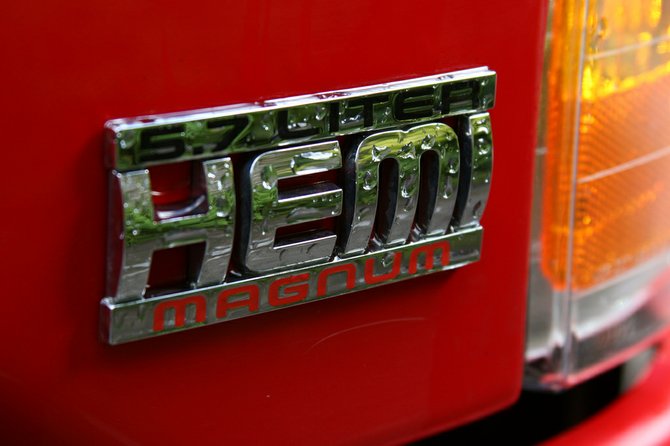Roughly 11 million pre-2006 vehicles and other diesel engines remain—spewing a harmful mix of gas and particles linked to cancer and deaths from respiratory disease and heart attacks, according to the EPA. Photo by Courtesy Flickr/Rogerblake2
More than 50,000 high-polluting diesel engines have been cleaned up or removed from U.S. roads in a federal program designed to reduce smog and greenhouse gases, according to a new Environmental Protection Agency report to Congress.
While industry and environmental officials call the program a success, it is now threatened with a 70 percent cut in funding under the Obama Administration's new budget.
School buses and long-haul trucks accounted for almost 40,000 of the approximately 52,000 engines that were replaced or upgraded to cleaner technologies between 2008 and 2010. There are about 15 million diesel trucks and buses in the United States, according to the EPA.
About 230,000 tons of soot and smog-causing pollutants and more than two million tons of carbon dioxide were eliminated, according to the report. In addition, 205 million gallons of fuel were saved.
"There are not too many government programs investing in energy efficiency and human health that can demonstrate this success," said Allen Schaeffer, executive director of the Diesel Technology Forum, which represents diesel engine manufacturers.
The pollution reductions were spurred by $470 million in federal grants doled out under the Diesel Emissions Reduction Act between 2008 and 2010. Authorized by Congress and signed by President George W. Bush, the program started in 2005.
Diesel engines are the "lifeblood of global commerce," Schaeffer said, because they power heavy-duty trucks, farm and construction equipment and buses.
But they also have been heavy polluters, which prompted the EPA to pass emission standards that forced new diesel trucks and buses beginning in 2006 to use pollution-control technology.
The reductions in smog and soot from replacing the older vehicles are small compared to the entire fleet. They amount to an estimated 2 percent of total particulates from diesels, based on the EPA's database. But the program was targeted in communities with severe pollution problems. The EPA said in its report that it "placed emphasis on maximizing health benefits and serving areas with poor air quality."
Roughly 11 million pre-2006 vehicles and other diesel engines remain—spewing a harmful mix of gas and particles linked to cancer and deaths from respiratory disease and heart attacks, according to the EPA.
A 2005 report from the Clean Air Task Force, a nonprofit environmental group, estimated diesel fumes are responsible for about 21,000 premature deaths in the United States per year.
About 45 million people live within 300 feet of a freeway in the United States, according to the EPA.
Other diesel hotspots include ports—both ocean and inland. Thirteen million people—3.5 million of them children—live near major ports or rail yards, according to report by the environmental group Natural Resources Defense Council.
"Diesel disproportionately impacts low-income communities, and usually, mostly people of color," said Diane Bailey, a senior scientist at the NRDC.
The EPA estimates that the new and retrofitted diesel engines led to 1,400 fewer premature deaths and between $3.4 million and $8.2 million in savings related to fewer hospital visits.
The new engines also decreased greenhouse gases that contribute to climate change, with 2.3 million tons of carbon dioxide removed. Diesel also is a major contributor of black carbon, a component of particulate matter linked to a short-term warming effect. The EPA estimates about 52 percent of black carbon emitted in the United States is from diesel vehicles.
The 12,500-ton reduction in particulate matter attributed to the program suggests big black carbon reductions as well. Overall black carbon emissions are on pace to be reduced 80 percent by 2020 compared to 1990 levels, according the EPA.
Upgrades to diesel engines include pollution-control technologies such as catalysts and particulate filters. Schaeffer pointed to Cummins, Inc., Caterpillar and John Deere as some leading manufacturers that have been developing cleaner, more efficient diesel engines.
But he said it's the "farmers, small business owners and communities," that have benefited from the program.
"Many projects have focused on school buses due to the importance of cleaner transportation for children and communities. In addition, the program targeted long-haul trucks, assisting fleets with fuel-saving technologies, and lowering emissions," the EPA report says.
The new report comes on the heels of President Obama's 2014 proposed budget, which would slash the program's funding from $20 million in fiscal year 2013 to $6 million. Funding already was cut from $50 million in fiscal year 2011 to $30 million in fiscal year 2012.
For every federal dollar put into the diesel program from 2008-2010, about $3 was invested by non-profits, state and local governments and private industry, according to the EPA report.
The proposed cuts are "not a very smart strategic move," Schaeffer said. "The President just announced clean air particulate standards, and will be announcing ozone standards soon, so there will be many more communities that would naturally turn to a program like this to help reduce their emissions."
Bailey said the program is "one of the few areas where we've been hand-in-hand with the diesel industry."
"The diesel industry has come a long way," Bailey said. "It would be really disappointing to see the program funding slashed when it's been so successful on all accounts."



Comments